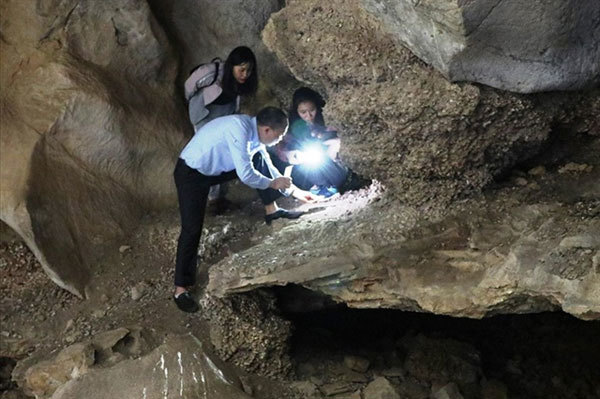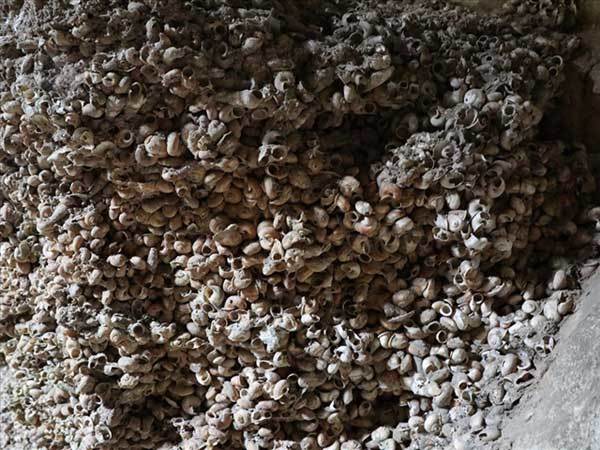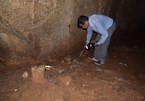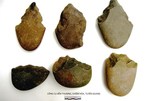Nguyen Cao Tan, deputy director of the provincial Culture and Sports Department, said experts from the Vietnam Archaeology Institute, the Vietnam History Institute and the department have done research at the cave as part of a research project on the region stretching from Boi River junction to ancient Hoa Lu Citadel in the period of the beginning of Christian Era to the establishment of Dai Co Viet State (in 968).
 |
| Experts work in Doi Cave. Photo dantri.vn |
The cave is located by the Na River, near Bai Ngo Mountain, Dam Bai Village, Gia Tuong Commune, Nho Quan District. The entrance of the cave is some 30m higher than the nearby rice field surface.
The inner portion of the cave covers a total area of some 200sq.m, where scientists have found many holes and a 2-metre layer of sediment of snail shells, oyster shells, and burnt animal bones, showing early humans used fire in the cave.
 |
| Sediment found at the cave. Photo dantri.vn |
Archaeologists estimate the ancient people lived some 10,000 years ago.
Tan said the findings are important for further research.
Earlier, experts found traces of early humans in But Cave in Lac Van Commune from some 6,000 years ago.
They had also found traces in a larger area of Trang An Landscape Complex and Ky Lan Mountain in Gia Phuong Commune, Gia Vien District dating back to 4,000 to 30,000 years ago.
VNS

Traces of early humans found in Ba Be National Park
During the recent field survey in Ba Be National Park in the northeastern province of Bac Kan, archaeologists have found many traces of early humans in caves in karst mountains around Ba Be Lake.

Primitive human traces found in Tuyen Quang province
Evidence of primitive humans have been found in several sites in the mountainous area of Chiem Hoa district, the northern province of Tuyen Quang, according to archaeologists.